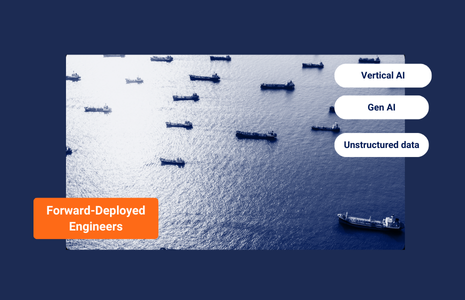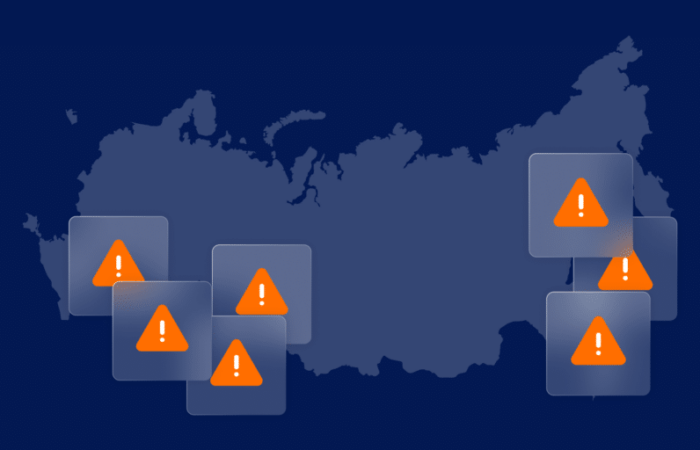The facts behind the headlines: Uncovering the full story with AI

What’s inside?
On August 3rd, news hit of the involvement of six tankers in a maritime incident in the Gulf of Oman. One of the tankers was hijacked. Tensions have been brewing in the Gulf throughout 2021. And this recent incident highlights the increasing threat in one of the world’s most important oil shipping routes. The six tankers mentioned in the open-source news reports include: GOLDEN BRILLIANT, ABYSS, QUEEN EMATHA, ASPHALT PRINCESS, KAMDHENU, and JAG POOJA. Five of the six tankers mentioned exhibited high-risk patterns. On the other hand, JAG POOJA showed common practice behaviors among tanker vessels and was most likely incorrectly flagged in the event.
In this blog, we’ll walk through the five high-risk vessels to showcase how deceptive shipping practices can create an illusion of knowledge and why without strong technology and the right insights, stakeholders can be left in the dark.
The importance of deceptive shipping practices
At Windward, we encourage decision-makers to ask tough questions – especially those operating in risky regions like the Gulf of Oman. For example, if you were onboarding one of the five vessels mentioned for business, did you have the data on the extensive history of deceptive shipping practices? Did you know that the vessel was hijacked by the same regime it had visited in the past? By looking at the behavioral history of the vessels involved, it becomes possible to better understand these recent events.
AIS manipulation and obscure ownership practices are becoming commonplace for sanctioned programs to establish vast smuggling networks. Specifically, AIS manipulation is a deceiving tactic that has challenged the industry’s ability to detect legitimate risk. The Gulf of Oman, in particular, is a hot zone for these activities.
The cases below will highlight the red flags we identified:
The GOLDEN BRILLIANT: This vessel had six instances of dark activity. On July 21st, it used a location tampering method that falsified the GPS reading transmitted via the onboard AIS device.
The QUEEN EMATHA: This vessel had a previous Beneficial Owner of the “Triple Success,” which was sanctioned on June 10th, 2021. The Triple Success engaged in a method of operation that relied on dark activities near Iran and the distribution of oil near Sohar, Oman.
THE ABYSS: The ABYSS also showed behavioral pattern matching vessels engaging in Iranian oil smuggling operations. On May 26th, the vessel entered the Iranian EEZ and conducted a four-day period of dark activity. Upon resuming transmissions, the vessel’s draft changed, suggesting the loading of Iranian crude while operating without AIS. The vessel repeated this pattern in the following weeks.
The ASPHALT PRINCESS: When it comes to the ASPHALT PRINCESS, other data providers confirmed that the Asphalt Princess showed some risky behaviors. But they fell short of providing the precise timing, location, and history of dark activity. In our system, the vessel’s history shows it was prone to conducting dark activities in Iran. Windward reports that the vessel is likely to have visited Iran in May, June, and July, whereas other providers made it difficult to identify any AIS gaps. Why is this so important? If you were financing or doing business with this vessel, wouldn’t you want to know of possible involvement in Iranian oil smuggling operations?
The KAMDHENU: Lastly, the KAMDHENU conducted multiple dark activities, which started and ended mainly within Iran’s EEZ. This pattern matches the ones previously detailed with the ASPHALT PRINCESS and QUEEN EMATHA.
All three vessels shared a similar pattern of operation, including sailing into the Persian Gulf, dark activity events, and stopping on the maritime border between Oman and Iran.
The impact
Basic algorithms are unable to filter the noise to pinpoint meaningful events worth flagging. Among hundreds of dynamic data points, ownership data and behavioral data are essential for effective risk review. The ASPHALT PRINCESS was conducting dark activities in Iran for quite some time before the event, and our system flagged all of these instances. Moreover, the vessel’s behavioral pattern resembled that of the MT RIAH in 2019, a known boarding instance carried out by Iranian forces that reportedly involved oil smuggling. A deeper investigation revealed that the MT RIAH and the ASPHALT PRINCESS share a mutual Beneficial Owner “Prime Tankers Llc.”
The power of context
It’s important to mention that not all hijacking events exhibit the same patterns. When examining previous cases such as the STENA IMPERO (2019) and the HANKUK CHEMI (2021), both vessels appeared to have a consistent AIS transmission profile throughout their operations leading up to the event. But that’s precisely why an adaptable system that can provide the right context for each event is a game-changer. Risk is not black or white. Identifying deceptive shipping practices is a good first step, but it’s not enough. Stakeholders need a system that can:
- Provide explainable insights for every vessel activity
- Identify all related vessels, regions, and owners
- Link similar cases of risk patterns
- Adapt to evolving practices and typologies
In this way, when there are five vessels showcasing similar methodologies, we can understand the broader risk exposure. Contact us to learn more about how Windward’s maritime AI can help your business distinguish coincidence from deliberate schemes.










